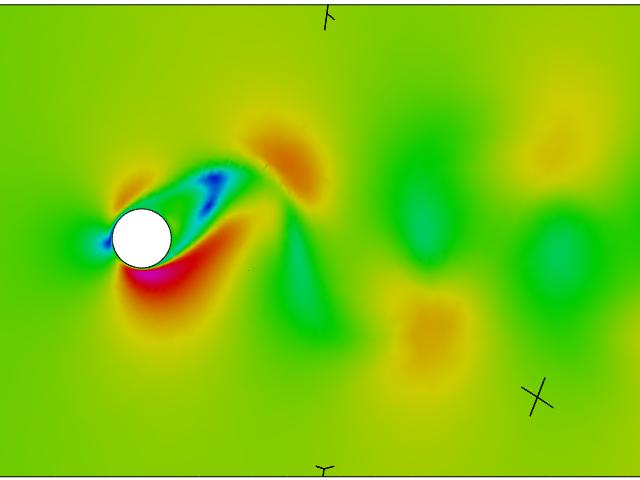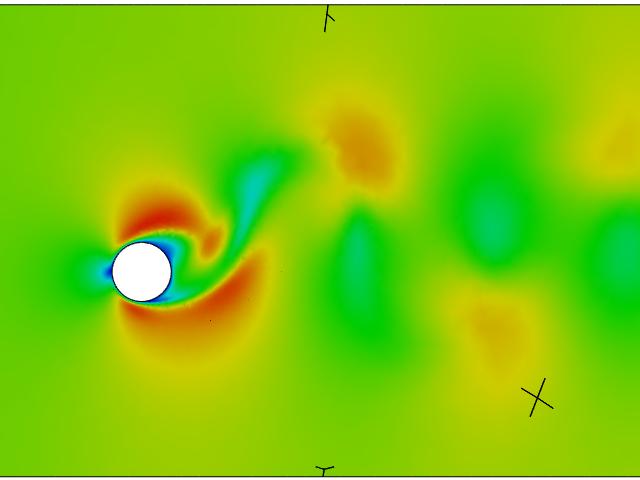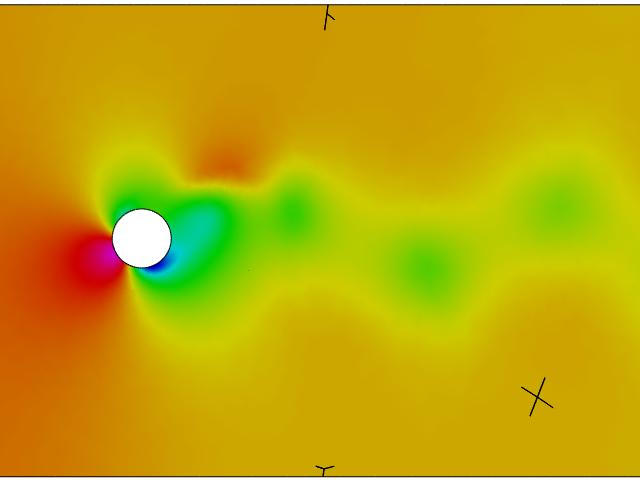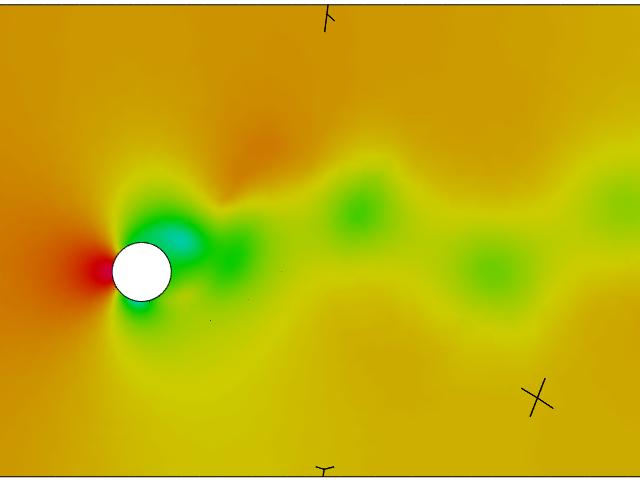Research Project Categories
Truck:
In this simulation the deformation of a truck due to an incoming shock wave is computed. A fluid code is coupled to a structural code in order to solve the coupled problem. After about 2.5 ms the shock wave reaches the truck as shown here and the structure is almost undeformed as seen here.


As time progresses the shock wave advances over the truck and the truck starts to deform .


Later in time the shock has advanced even more and the truck has undergone more deformations.


After the shock has gone over the truck the deformations are severe and the structure looks like these.


Airbag:
The inflation of an airbag is simulated here with a fluid solver coupled to a structural solver. They update the fluid and structural solutions alternatively.

The structural mesh at the beginning of the simulation is undeformed. As the air starts to flow in, the airbag starts to inflate and as time passes on it inflates more until its final inflated state.



The final fluid mesh has undergone several re-meshes in order to avoid very distorted or negative elements in the volume.

At the end of the simulation the the fluid solution can be visualized as a shading of the surface colored according to the pressure and a vector plot of the velocity on a cut-plane.


Chip:
In this simulation a micro-chip, composed of different materials is cooled by a fluid.

The fluid flow field is updated by a fluid solver coupled to a thermal code to update the temperature field on the solid components. We can see the effects of the cooling fluid on the chip below.


Vibrating Cylinder:
In this simulation a cylinder is allowed to vibrate in the vertical direction due to a spring mounting. The Reynolds-number based on the diameter of the cylinder is Re=190, leading to the development of a vortex street behind the cylinder. The spring stiffness and mass of the cylinder are chosen in such a way that the eigenfrequency of the cylinder-spring system is very close to the frequency of vortex detachments.
The velocity, pressure and mesh in a cut plane at two times during the simulation can be seen below.






The development of the forces, as well as the response of the cylinder and the transfer of energy can be seen below.



Wind-Bridge Interaction:
In this simulation a bridge is allowed to move based on the windloads computed. The structural model only considers the fundamental eigenmodes of bending and torsion. Due to symmetry, only half the bridge needs to be simulated. The profile of the bridge is similar to that of the Tacoma bridge, as well as the eigenmodes. The resulting flowfield and movement can be seen below, (e.g. using mplayer).
